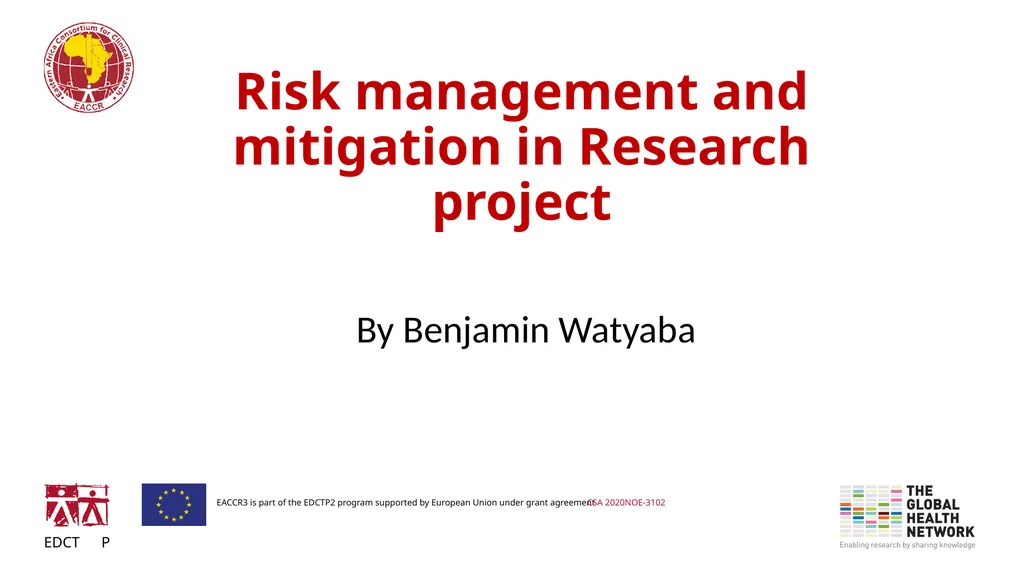
Risk management and mitigation in Research project
Author: test | Published: 2025-06-27
Description: Risk management and mitigation in Research project By Benjamin Watyaba Introduction The goal of project management is to ensure that a project reaches its objective within the predefined quality, timeframe, and cost. Challenges: Reasons
Download Presentation
Download the PPT/PDF: Download
Transcript:
Loading transcriptÖ